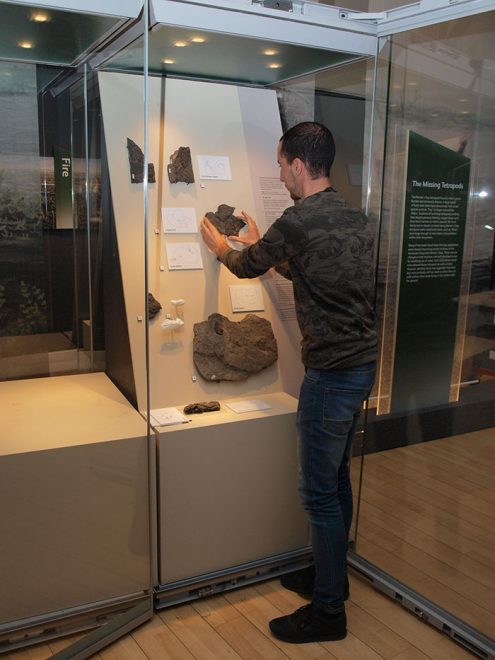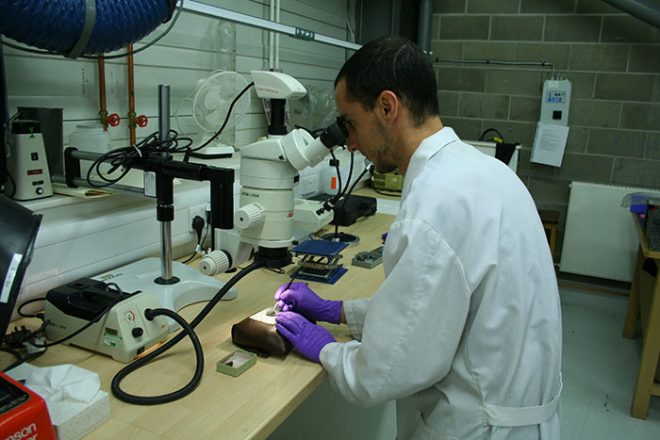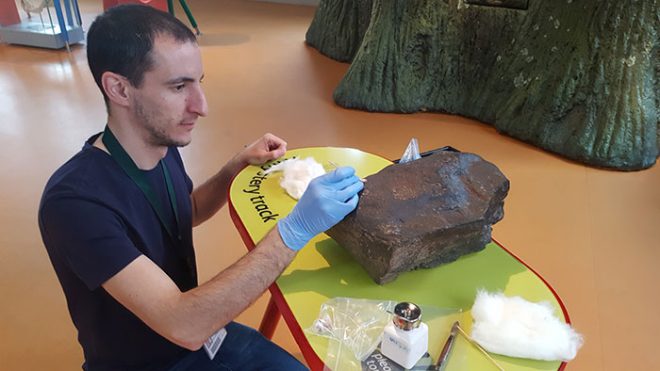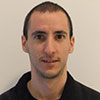From the biggest dinosaurs to the smallest fish; from the oldest stones to the youngest human fossils. A career that never is enough. My name is Rubén Contreras and I am a geologist with a great interest in conservation. I have worked in conservation and preparation in natural sciences for more than ten years in Spain, trying to improve my knowledge and making this field my way of life. Like a doctor, I am always searching for the best treatment for my patients: fossils.
Five years have passed since I had the opportunity to help with the redevelopment of the National Museum of Scotland in 2011. I was delighted to return to Edinburgh in March this year to visit the Natural World galleries with which I had assisted, and to interview for an internship that I had applied for. The feeling as I was getting close to the Animal World gallery was wonderful and I was completely astonished seeing the results. There was nostalgia remembering the experience and excitement of being part of that enormous project.
I couldn’t leave without first visiting the temporary exhibition Fossil Hunters. The museum was closing in less than an hour and I didn’t know when I would be visiting again. Who would have thought that one of my first jobs working here in the geology lab would be to prepare fossils from the project that produced the exhibition, TW:eed (Tetrapod World: early evolution and diversity)? Yes, that’s right, I was selected as the successful candidate at my interview to become a Geological Conservation Intern at National Museums Scotland in conjunction with the Institute of Conservation and supported by the Clothworkers’ Foundation.


It is an indescribable feeling to be the first person in the entire world to see the morphology of 345 million-year-old fossils and to be able to uncover them in an efficient way to be researched by members of the project. Furthermore, the small size of the bones makes the work extremely difficult and we cannot make any mistakes!

Looking through a microscope, I use different tools such as scalpels and dental tools, as well as adhesives and consolidants, to remove matrix (the substance in which the fossil has been buried) from the rock. It is not an easy task. Patience, precision, good vision, knowledge in anatomical morphology and love of the subject are some qualities you need in the conservation of natural sciences to deliver good results and improve your knowledge.
Limb fossils from a possible tetrapod or jaws from some kind of primitive fish corresponding to the Carboniferous period are some remains I have discovered during the few months since I started working here. There is still a lot of material to uncover and I am sure that there will be more surprises to come.

All this work would not have been possible without the Clothworkers’ Foundation grant, which allows me to learn and spend fifteen months working hand in hand with a professional and enthusiastic team under the supervision of Vicen Carrió. Thanks to them, I am learning new aspects related to this field every day.

As I finish writing this post, I remember the first time I was at National Museums Scotland in 2011 when I thought: “It would be a dream working here accompanied by this group of professionals”. It is not a dream, I am here.
